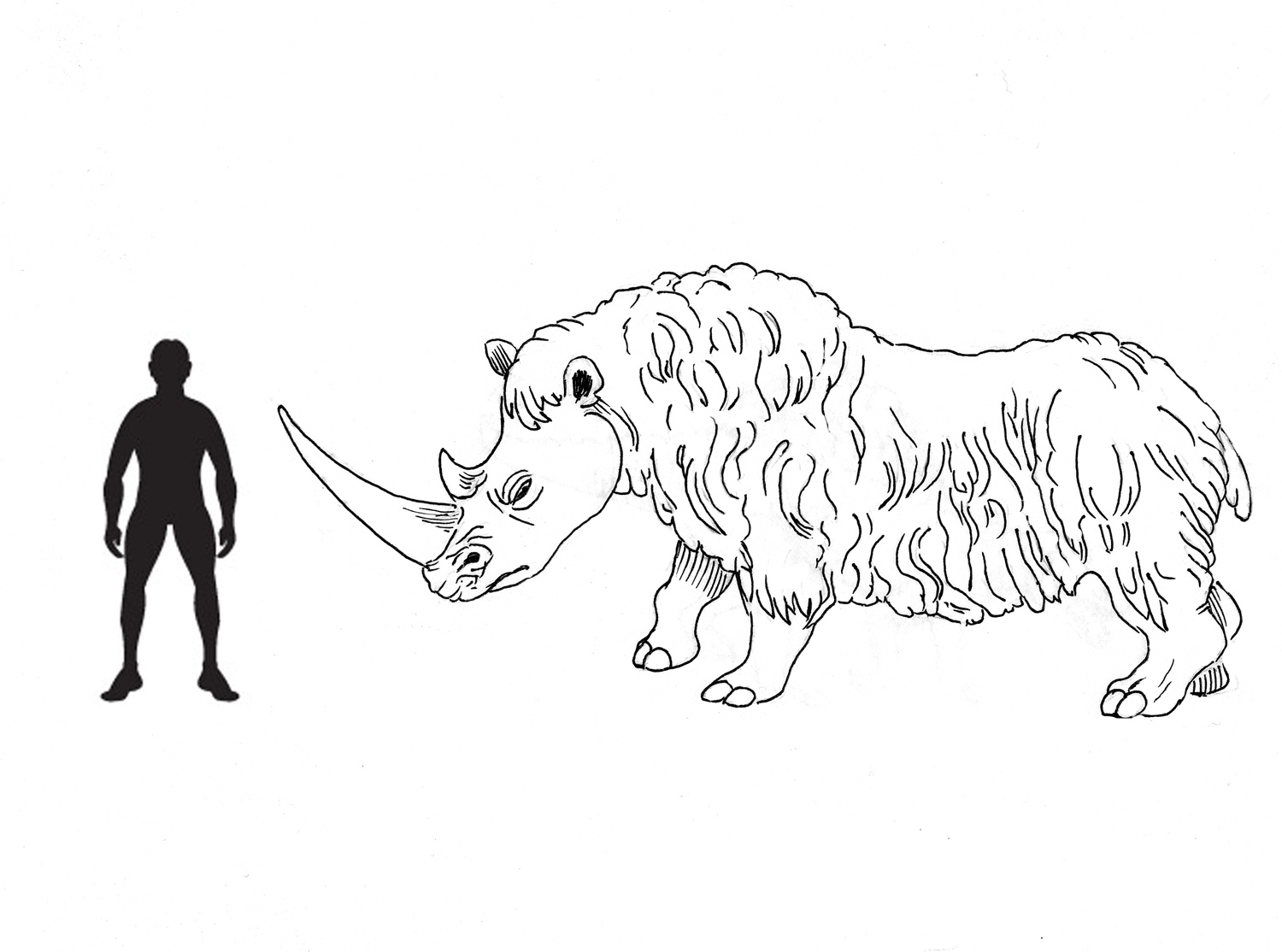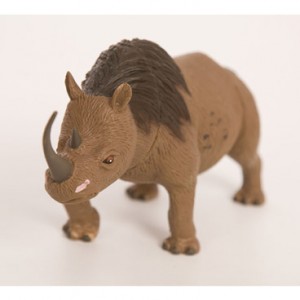Female Woolly Rhino from Late Pleistocene Gives up Her Secrets
The fossilised remains of a female Woolly Rhino which was discovered as a Russian gold mine was extended, is providing scientists with a unique insight into the anatomy of these large prehistoric mammals. The carcase is so complete that the stomach contents have been studied and a team of scientists from the Russian Academy of Sciences (Yakutsk), have proposed an interesting theory as to why these herbivores from the Ice Age became extinct.
Woolly Rhino
The corpse, preserved in the frozen permafrost, was found during excavations at a gold mine, the fossilised remains of the Woolly Rhino (Ceolodonta) was found at a depth of between five and nine metres. The fossil was first discovered in 2007 and since then it has been moved from the lower reaches of the Kolyma River were the corpse had laid for the best part of 39,000 years back to a laboratory so that the large specimen could be studied in detail.
Lead researcher, Gennady Boeskorov (Russian Academy of Sciences) stated that the fossil consisted of the head, the two characteristic horns of Coelodonta antiquitatis, much of the body and all four stubbly legs. The stomach contents had been preserved but most of the other internal organs were absent. The Russian team have also postulated a new theory to explain the extinction of the Woolly Rhino at the end of the last Ice Age.
Climate Change
The team suggest in a detailed paper published in the academic journal the “Biology Bulletin” that the sudden warming of the atmosphere led to more moisture in the air which subsequently fell as snow or rain. Heavy snow falls would have made the stubby-legged, heavy footed Woolly Rhino very uncomfortable as they probably could not move very effectively in snow more than thirty centimetres deep. These animals would have become immobile and the snowfall may have led to their demise.
An Illustration of a Woolly Rhinoceros
Picture credit: Everything Dinosaur
Studies of the load bearing properties of the female rhinoceros show that these heavy animals placed a pressure on the ground of 1.8 kilogrammes per square centimetre of the three-toed hooves of this Perissodactyl ungulate. This is three times higher than a modern-day moose. This suggests that in snow these animals would have sunk and struggled to make progress in particularly deep snow.
Inability to Adapt
Scientists have thought for sometime that the extinction of Coelodonta was due to their inability to adapt to rapid climate change. This large, stocky rhino is believed to have been an animal of grasslands or open woodland, where snow would lie on the ground for only a few weeks per year. Heavy snowfalls due to the rapidly warming atmosphere would have seriously hampered these animals and when the snow thawed, the Woolly Rhinos were probably cut off from other populations by flooding. Such heavy, short-legged creatures would have become stuck in hollows caused by melting ice and many of them could have died from starvation, drowned in the rising ground water or simply been picked off by predators once they were trapped.
Scientists from the Russian Academy of Sciences studied the anatomy of extant large mammals of the High Arctic, grazers such as the Saiga and the Musk Ox. They discovered that once snow levels got up to these animals stomachs, they found it very difficult to move. This suggests that the Woolly Rhino would have had similar problems.
Female Woolly Rhino Carcase
The carcase of this female Woolly Rhino has also given the Russian team a good idea of how this extinct species is related to those rhinos alive today. They propose that Coelodonta was similar to the very rare Javan Rhinoceros (Rhinoceros sondaicus). The female probably weighed around 1,500 kilogrammes and as she had two mammary glands it is likely that these large animals gave birth to one calf or very rarely twins. Their slow breeding could also have led to their demise.
The ears have been preserved on this Woolly Rhino. They are shaped differently from the ears of modern rhinos. They are more narrow and lancet shaped, an adaptation to a cold environment where narrow ears would have reduced heat loss from the body. This is why Woolly Mammoths (Mammuthus primigenius) had smaller ears than today’s living elephants. A number of western European cave paintings depict Woolly Rhinos and the ears of this Russian specimen are just like those in the cave art. It seems that these early artists had an eye for detail, especially when it came to depicting these large herbivores.
A Typical Woolly Rhinoceros Replica
Picture credit: Everything Dinosaur
Dr Boeskorov commented that as the Late Pleistocene gave way to the early Holocene, climate change and the threat of increased snow fall would have led to prolonged “white overs” and this may have hastened the demise of this animal.
It was stated:
“It is quite likely [this] factor played an important role in the extinction of the Woolly Rhinoceros.”
With the ice and snow melting, the landscape would have become increasingly saturated with water and pitted with deep hollows and bogs, these would have formed natural traps that the short-legged rhinos could not have got out of.
“In addition, the natural traps presented certain danger for such a short-legged and heavy creature.”
For models of Woolly Rhinos and other prehistoric animals: Papo Prehistoric Animal Models and Figures.







This is a very detailed and incredibly interesting article on one of my favorite Prehistoric mammals. In studying
Papo’s Woolly Rhino sculpting, it is very clear that their design team went into a lot of scientific research. I find the Papo Woolly Rhino just stunning and by far the most scientifically accurate one of this animal made. Even the large anterior horn has the correct plank-shape, presumably caused by this animal using its horn to plow snow from side to side in search of food.